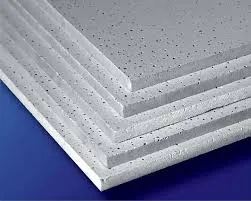9 月 . 12, 2024 07:38 Back to list
T Bar for Ceiling Grid - Quality Suspended Ceiling Solutions
Understanding T-Bar for Ceiling Grid Systems
When it comes to modern architectural design and construction, ceiling systems play a crucial role in aesthetics, acoustics, and functionality. One of the most popular and effective solutions for suspended ceilings is the T-bar grid system. The T-bar, also known as a T-grid or T-bar ceiling grid, is an essential component that supports various ceiling materials, including acoustic tiles, gypsum boards, and other panel systems.
What is a T-Bar?
A T-bar is a metal grid system that consists of main runners and cross tees arranged in a grid pattern. The main runners are typically installed parallel to one another, while cross tees connect them, forming a series of squares or rectangles. This grid structure provides a robust framework that supports ceiling tiles, allowing for easy installation and maintenance.
T-bars are usually made of lightweight galvanized steel, making them durable yet easy to work with. They come in various sizes, commonly 15/16 inch or 9/16 inch, which refer to the width of the visible portion of the grid when installed. This variety allows builders and designers the flexibility to choose a ceiling grid system that best fits their specific needs.
Installation Process
Installing a T-bar ceiling grid is a process that requires careful planning and execution. First, the designer must determine the layout, including the desired height of the ceiling and the location of lights, vents, and other fixtures. Measurements are taken, and a level line is marked around the perimeter of the room.
t bar for ceiling grid

Next, the main runners are anchored to the ceiling using hangers or wires. This step is critical as it ensures that the grid is level and securely supported. Once the main runners are in place, the cross tees are installed at regular intervals, typically 4 feet apart, completing the grid structure.
Finally, ceiling tiles or panels are laid into the grid, creating a seamless and visually appealing finish. One of the advantages of a T-bar system is that it allows for easy access to the space above the ceiling, making it convenient for maintenance, repairs, or upgrades to electrical and HVAC systems.
Benefits of T-Bar Ceiling Grids
There are numerous benefits to using T-bar ceiling grid systems. First and foremost, they offer versatility and adaptability to various design styles and functional requirements. T-bar grids can effectively conceal cables, pipes, and ductwork, contributing to a cleaner and more organized appearance.
Additionally, they provide excellent sound insulation and can be paired with acoustic tiles to improve the overall acoustics of a space. This is particularly beneficial in office environments, schools, and healthcare facilities where noise reduction is essential for productivity and comfort.
In summary, T-bar ceiling grid systems are an indispensable element of modern ceiling construction, combining functionality, aesthetic appeal, and ease of maintenance. Whether in commercial or residential settings, these systems continue to be a favored choice for architects and builders, ensuring spaces are not only beautiful but also functional.
-
Revolutionizing Interior Design with Ceilings t grid Suspended SystemNewsOct.29,2024
-
Revolutionizing Ceiling Design with ceiling access panel with Gypsum Tile WaterproofNewsOct.29,2024
-
Revolutionizing Interior Design with PVC Gypsum Ceiling: A Comprehensive GuideNewsOct.29,2024
-
Elevating Interior Design with High quality Mineral Fiber Ceiling TilesNewsOct.29,2024
-
Revolutionizing Interior Design with PVC Gypsum Ceiling: A Comprehensive GuideNewsOct.29,2024
-
Elevating Interior Design with High-Quality Mineral Fiber Ceiling Tiles: A Comprehensive GuideNewsOct.29,2024







